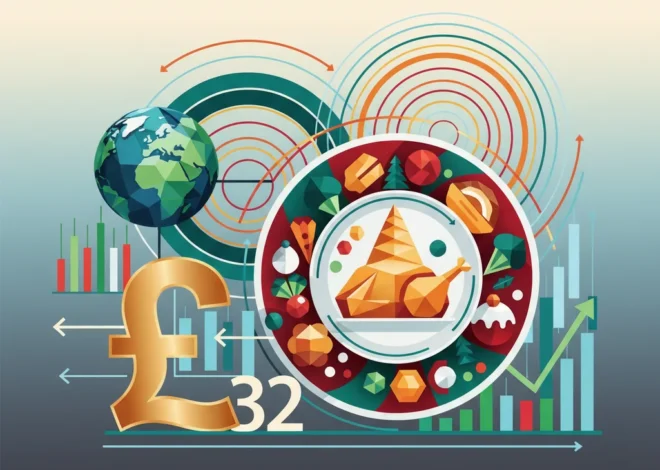
The Uncontainable Genie: Why AI Defies Cold War Rules and What It Means for Global Finance
For nearly half a century, the world held its breath under the shadow of nuclear annihilation. The Cold War, a tense standoff between superpowers, was governed by a chilling but surprisingly stable logic: Mutually Assured Destruction (MAD). This grim calculus, underpinned by treaties and the strategy of détente, worked because nuclear weapons were tangible, astronomically expensive, and controlled by a handful of states. It was a terrifying game, but one with discernible rules and players.
Today, we stand at the dawn of a new technological epoch, driven by Artificial Intelligence. Many are tempted to apply the old Cold War playbook to the rising competition between nations in AI. However, as a prescient letter by Robert Holloway in the Financial Times points out, this analogy is not just flawed; it’s dangerously misleading. AI is not the new nuclear bomb. It is a fundamentally different kind of power—a genie that, once out of the bottle, cannot be contained by any single actor or traditional geopolitical strategy.
For investors, business leaders, and anyone involved in the global economy, understanding this distinction is paramount. The proliferation of AI isn’t a future risk to be managed by diplomats; it’s a present reality reshaping markets, redefining corporate strategy, and introducing a new, unpredictable vector of systemic risk into our financial systems.
The Illusion of Control: Revisiting the Cold War Playbook
The concept of détente, which characterized the latter part of the Cold War, was built on a foundation of verifiable control. Arms limitation treaties like SALT were possible because you could count missile silos from satellites. The production of fissile material required massive, easily identifiable industrial infrastructure. In short, nuclear technology was centralized and ridiculously difficult to replicate.
This physical reality allowed for a top-down, state-led approach to managing global risk. The world’s fate rested in the hands of a few leaders who controlled the literal buttons. While fraught with tension, this structure created a framework for negotiation, verification, and a fragile form of stability. The barrier to entry for the “nuclear club” was immense, ensuring the key players remained few and identifiable.
AI: A Fundamentally Different Kind of Power
Artificial Intelligence shatters this paradigm. Attempting to apply the principles of nuclear non-proliferation to AI is like trying to stop the flow of water with a fishing net. The core differences are stark and have profound implications for global stability and the financial technology landscape.
The key distinctions are best illustrated in a direct comparison:
| Characteristic | Nuclear Weapons (Cold War Era) | Artificial Intelligence (Modern Era) |
|---|---|---|
| Nature of Technology | Physical hardware (bombs, missiles) | Digital software (code, algorithms, models) |
| Cost of Replication | Astronomical (billions of dollars) | Near-zero for software; accessible via cloud |
| Key Actors | A few nation-states | Corporations, universities, open-source communities, individuals |
| Control & Oversight | Centralized, state-controlled | Decentralized, diffuse, and often uncontrollable |
| Detectability | Highly detectable (satellites, inspections) | Largely invisible and easily hidden |
| Proliferation | Extremely difficult and slow | Instantaneous and global |
Unlike a warhead, an advanced AI model is just code. It can be copied an infinite number of times and distributed globally in seconds. The rise of powerful open-source models, such as Meta’s Llama series, means that state-of-the-art capabilities are no longer the exclusive domain of governments or a few tech giants. A talented developer with a powerful laptop can now access and fine-tune models that would have been considered science fiction just a few years ago. According to Stanford’s 2023 AI Index Report, there were 32 significant open-source AI models produced in 2022, compared to just 11 from corporate institutions (source), highlighting the rapid decentralization of AI development.
This democratic and chaotic proliferation makes a mockery of traditional top-down control. There is no treaty that can stop the sharing of a file on the internet. There is no inspection regime that can verify what algorithms are running on a server farm in a sovereign nation, let alone on millions of personal computers.
The 5G Illusion: Why Your Phone's Signal is a Critical Indicator for the Economy and Your Portfolio
The Economic Fallout: Geopolitical Risk Enters the Digital Age
For those focused on finance and investing, this new reality is not an abstract geopolitical debate. It represents a fundamental shift in the nature of market risk. The inability to contain AI means that its dual-use nature—capable of creating immense economic value and causing catastrophic disruption—is a permanent feature of the global landscape.
Consider the implications for the stock market and financial stability:
- Algorithmic Warfare: The same AI that optimizes a supply chain or a trading strategy can be weaponized. Imagine a hostile actor deploying an AI to execute a “disinformation flash crash,” spreading hyper-realistic fake news about a major bank or currency to trigger a panic. The speed and scale of such an attack could bypass human intervention, creating unprecedented volatility in trading environments.
- Systemic Risk in Fintech: The rapid integration of AI into core banking and financial technology creates new vulnerabilities. A sophisticated AI-powered cyberattack could target critical financial infrastructure, not just to steal money, but to erode trust in the entire system. The interconnectedness of the modern economy means a failure at one node could cascade globally.
- The Investment Paradox: AI represents one of the greatest investment opportunities in history, fueling massive returns for companies across the tech sector. Yet, this boom is happening in a regulatory vacuum. Investors must now grapple with pricing in a new, unquantifiable risk: the potential for the very technology they’re funding to be used in ways that destabilize the markets they operate in. Global private investment in AI was a staggering $91.9 billion in 2022 alone (source), pouring capital into a technology we fundamentally cannot control.
Navigating the New Frontier: Strategies for a World Without Détente
If control and containment are off the table, what comes next? The focus for leaders, investors, and policymakers must shift from an impossible goal of restriction to a pragmatic strategy of adaptation and resilience.
For Business and Finance Leaders:
The priority must be building institutional resilience. This goes beyond standard cybersecurity. It means developing robust internal AI governance frameworks, stress-testing systems against AI-driven attack scenarios, and investing in human oversight that can interpret and intervene when automated systems behave unexpectedly. Leaders in the banking and fintech sectors, in particular, must champion industry-wide standards for AI security and transparency, as a vulnerability in one firm can become a threat to all.
For Investors:
A new layer of due diligence is required. Evaluating a company’s AI strategy is no longer enough. Investors must now assess a company’s AI *risk posture*. How is it protecting its data and algorithms? Does it have an ethical framework for AI deployment? Is its business model resilient to market shocks caused by AI-driven events? Companies that lead in responsible AI development may command a premium, as they are better insulated from both reputational and operational risks. The rise of AI will also have profound implications for other emerging technologies, including how they are secured and deployed, from IoT devices to blockchain networks.
For Policymakers:
The challenge is immense. Instead of focusing on futile attempts to stop proliferation, governments should pivot to promoting global norms for responsible AI use. This includes funding research into AI safety and alignment, creating “bug bounties” for identifying dangerous capabilities in open-source models, and fostering international cooperation on defending critical infrastructure like the global financial system. As one analysis from the Carnegie Endowment for International Peace suggests, the goal should be to “shape the direction of the technology’s development and diffusion” rather than halt it (source).
India's Bull Run: Why the World's Investors Are Doubling Down on the Indian Stock Market
Conclusion: A New Logic for a New Era
The comfortable analogies of the past offer little guidance for the future we are building. The genie of Artificial Intelligence is not just out of the bottle; it is replicating itself, evolving, and weaving itself into the very fabric of our global economic and financial systems. The logic of détente—of centralized control and a delicate balance of power—is obsolete.
The new logic must be one of resilience, adaptation, and distributed responsibility. The challenges are profound, touching on everything from market stability and economics to the very definition of international security. For those of us in the world of finance and investment, ignoring this paradigm shift is not an option. The uncontainable nature of AI is now a permanent and defining feature of the market, and our ability to thrive will depend on our capacity to understand and navigate this turbulent new reality.


